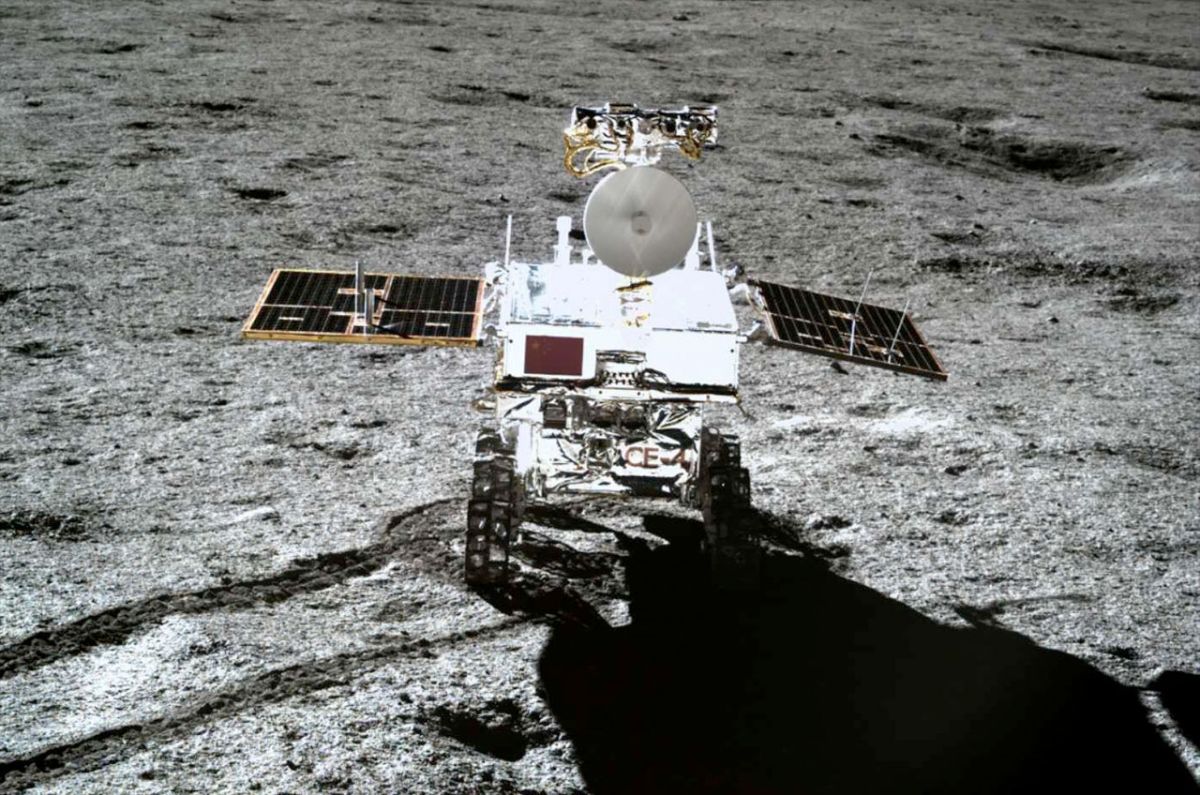
China’s plucky Yutu 2 rover is about to wake up and continue to explore the far side of the moon as the nation works to land a rover on Mars this May.
The rover, which launched with the Chang’e 4 mission, landed on the far side of the moon in January 2019 and recently completed its 29th lunar day of activities, the China Lunar Exploration Project (CLEP) said on April 23.
The mission’s solar-powered lander and rover entered a dormant state on April 19 Beijing time, just ahead of sunset. The two spacecraft will be protected from temperatures as cold as minus 290 degrees Fahrenheit (minus 180 degrees Celsius).
Related: China unveils ambitious moon mission plans for 2024 and beyond
The rover and lander will wake up from their hibernation in early May following sunrise over the spacecraft in Von Kármán crater.
Yutu 2 has been making its way to the northwest of its landing point in Von Kármán crater and has so far traveled a total of 2,325 feet (708.9 meters), collecting data along the way with its panoramic cameras, lunar penetrating radar (LPR) and a visible and Near-Infrared imaging spectrometer.
The six-wheeled, 310-lb. (140 kilograms) rover has discovered a number of distinct layers of rock under the lunar surface, which scientists think was created by volcanism and intense asteroid strikes. The area it has observed also includes material delivered from nearby craters such as Finsen crater, according to a paper presented during the Lunar and Planetary Science Conference in March.
The paper states that the LPR could be a crucial instrument for determining the surface evolution history of the moon and tracing the sources of the surface materials discovered by Yutu 2.
More: The latest news about China’s space program
The rover is operating within the ancient South Pole-Aitken basin on the lunar far side, a massive impact basin. Scientists think that the event which created the basin may have excavated rock from below the moon’s crust and they hope that such material could help to unravel the secrets of the moon’s formation.
Yutu 2 has also come across a number of glass-bearing rock fragments created by or delivered by smaller impacts on the lunar surface, some of which have generated serious interest.
Once the rover wakes up in may, it will continue its journey to the northeast, where scientists hope to find basaltic rock from a nearby area to provide further insights into the history of the local lunar surface.
But Yutu 2 isn’t the only rover from China making progress. In mid-May China’s newly-named Zhurong rover, part of the nation’s Tianwen 1 mission, will make an attempt to land safely in Utopia Planitia on Mars. The six-wheeled, solar-powered Zhurong rover carries some technology and lessons derived from Yutu 2 but is larger at 530-lb. (240 kilograms) and carries more science instruments.
Follow us on Twitter @Spacedotcom and on Facebook.



